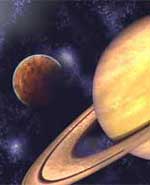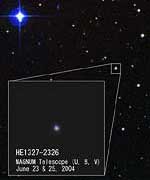The Expedition 11 crew — Cosmonaut Sergei Krikalev and Astronaut John Phillips — launched from the Baikonur Cosmodrome in Kazakhstan at 8:46 p.m. EDT Thursday, right on schedule.
Their Soyuz TMA capsule reached orbit a little less than nine minutes after liftoff. Russian flight controllers reported the spacecraft’s solar arrays had deployed as scheduled, and that all appeared normal.
With this 11th crew of the International Space Station is European Space Agency Astronaut Roberto Vittori of Italy. Their Soyuz is scheduled to dock with the Space Station at 10:19 p.m. EDT April 16.
Expedition 11’s Krikalev and Phillips will spend about six months aboard the Space Station. Vittori will spend almost eight days on the Station conducting scientific experiments, and return to Earth with the Expedition 10 crew.
That crew, Commander Leroy Chiao and Cosmonaut Salizhan Sharipov, has been on the station since October. They will leave the station April 24 in the Soyuz that brought them to the orbiting laboratory. Their landing is scheduled for 6:09 p.m. EDT that day in Kazakhstan.
Highlights of the new crew’s mission include welcoming the crew of the Space Shuttle Discovery on its STS-114 mission, the first Shuttle flight since the Columbia accident. Discovery crewmembers will conduct three spacewalks at the Station, deliver several tons of equipment and supplies and return to Earth with equipment and scientific experiments and trash from the Station.
Krikalev, 46, and Phillips, 54, will receive extensive handover briefings from their Expedition 10 predecessors, and will get training on the Station’s robotic Canadarm2.
They also may see the addition of a third crewmember to the Station this summer brought to the station by Atlantis on the STS-121 mission. Plans call for them to do two spacewalks, the first in August from the U.S airlock Quest in U.S. spacesuits, and the second, in September, in Russian spacesuits from the Pirs airlock. The spacewalkers will continue outfitting the station’s exterior and work with scientific experiments.
Krikalev and Phillips also will welcome the arrival of two Progress unpiloted supply vehicles. ISS Progress 18 is scheduled to reach the Station in June and ISS Progress 19 should be launched near the end of August.
In August, Krikalev, who also is Soyuz commander, and Phillips, who also will have the title of NASA ISS science officer, will move their Soyuz spacecraft from the Pirs docking compartment to the Zarya docking port. That will permit use of the Pirs airlock for spacewalk activity.
Krikalev is a veteran of five previous spaceflights, including two missions to the Russian space station Mir and two Shuttle flights. He was a member of the first Station Crew, serving aboard a much smaller ISS from Nov. 2, 2000, to March 18, 2001. He has spent a year, 5 months and 10 days in space. This flight should see him become the world’s most experienced space traveler.
Born in Leningrad (now St. Petersburg), Russia, he graduated from what is now St. Petersburg Technical University in 1981 and then joined NPO Energia, the Russian organization responsible for human spaceflight. He was selected as a cosmonaut in 1985.
Record or not, just being in space isn’t what’s important, Krikalev says. “The job itself is very interesting for me, being there and being able to look back on Earth, to do something challenging.” He said he probably hasn’t paid enough attention to that record.
Philips was born in Fort Belvoir, Va., and considers Scottsdale, Ariz., his home. He graduated from the Naval Academy in 1972 and became a Naval aviator. After leaving the Navy in 1982, he earned a masters and doctorate in geophysics and space physics from the University of California in 1984 and 1987. He did postdoctoral work at the Los Alamos Scientific Laboratory in New Mexico.
He was selected as an astronaut in 1996. He was a member of the STS-100 crew of Endeavour in 2001. On that mission he coordinated two spacewalks at the Station to install Canadarm2.
Phillips has wanted to return to the Station ever since. “It was a wonderful place to be,” he said. “The crew was doing a great job; they were having a good time.” He wanted to stay longer then. Now he’ll have about six months there.
Krikalev and Phillips are the Station’s fifth two-person crew. After the Columbia accident on Feb. 1, 2003, the ISS Program and the international partners determined that because of limitations on supplies the Station would be occupied by two crewmembers instead of three until Shuttle flights resume.
The 11th crew will continue science activities, initially with facilities and samples already on the station, but later with experiments scheduled to arrive at the station aboard Discovery.
The science team at the Payload Operations Center at the Marshall Space Flight Center in Huntsville, Ala., will continue to operate some experiments without crew input and other experiments are designed to function autonomously.
Krikalev and Phillips are scheduled to spend about 180 days on the Station, returning to Earth in October, a little over a week after the arrival of their Expedition 12 successors.
Original Source: NASA News Release


